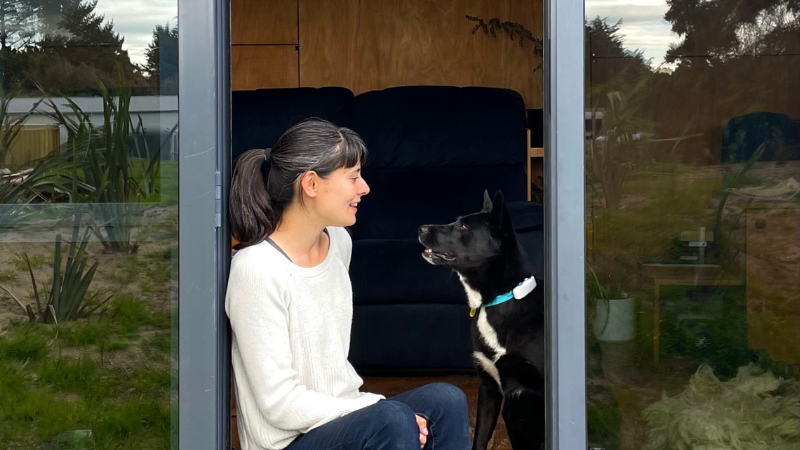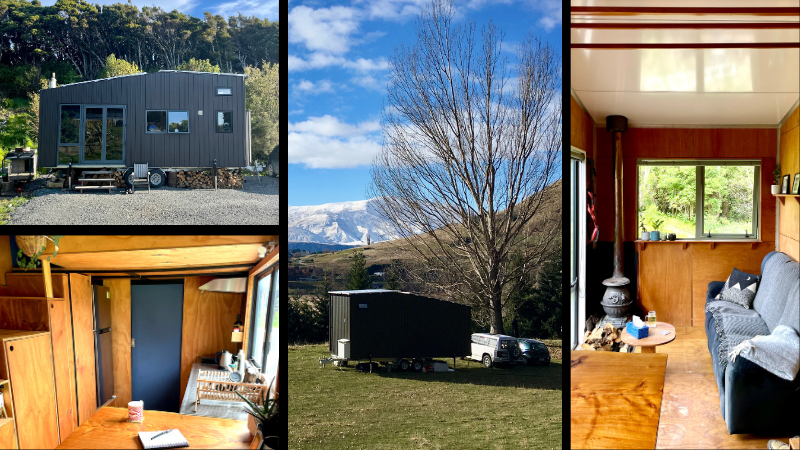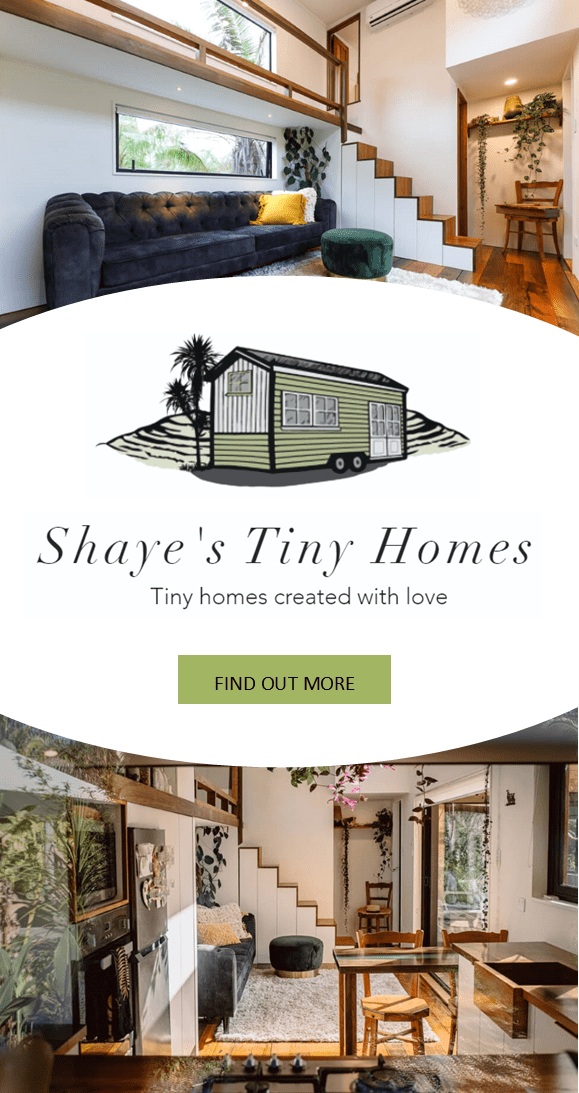As New Zealand grapples with a growing cost of living crisis, one couple, Aimi and Olly, accompanied by their dog Sephy, have charted a course that could inspire many.
Transitioning from traditional housing to a tiny, off-grid home, they have unlocked a pathway to financial freedom and a minimalist lifestyle. Their story is not just about scaling down but about reimagining life in a time of economic uncertainty.
For Aimi and Olly, the decision to embrace tiny living was propelled by a desire for independence and mobility, fueled by years of battling with rentals and restrictive landlords. The couple was no stranger to compact living, having traveled extensively and lived in small spaces. The lure of a debt-free existence was a compelling factor in their decision to go tiny.
Their journey began on a foundation of careful financial planning and saving. Determined to build their tiny house within a budget, they spent less than $35,000, a feat achieved through meticulous sourcing of secondhand materials and Olly’s hands-on work. A notable bargain was the acquisition of lithium iron phosphate batteries from an America's Cup boat, a testament to their resourcefulness.
The transition to tiny living was smoother than anticipated, with the couple already accustomed to living with fewer belongings. Learning to live off-grid presented new challenges, particularly in energy usage, but Olly's childhood experience in an off-grid home eased the process. The balance between the constraints and freedoms of their new lifestyle spurred a deeper embrace of minimalism.
Their tiny house, a product of Aimi’s design and Olly’s construction skills, epitomizes affordability, mobility, and simplicity. Built from freezer panels and covered in vinyl cladding, their home reflects careful consideration of their needs and a focus on practicality.
Their tiny house journey has surpassed expectations, offering them an unparalleled sense of freedom. Living in scenic locales like Queenstown and Wanaka at modest costs, their story highlights the potential of tiny living to align financial goals with a quality lifestyle.
In the current economic environment, Aimi and Olly's experience stands as a beacon of hope. They advise those considering tiny living to thoroughly research and understand the lifestyle's financial implications, emphasizing the importance of navigating local regulations.
Their quality of life has significantly improved in their tiny home. They have become part of a community that has reshaped their view on housing and lifestyle. The tiny house has positively impacted their personal relationships and self-awareness, fostering a greater appreciation for what truly matters.
The environmental benefits of their tiny home, especially its off-grid features, have added to the appeal. The couple cherishes the self-sufficiency and reduced ecological footprint that come with solar power and composting toilets.
Aimi and Olly believe in the sustainability of the tiny house movement as an affordable housing alternative. They plan to continue this lifestyle until their dream home in Central Otago is built, viewing their tiny house as a symbol of their journey and values.
Aimi, a GP, and Olly, a paramedic, have demonstrated that a fulfilling life does not necessitate large spaces or excessive possessions. Their experience in the tiny house, the longest they have lived in one place since childhood, illustrates a life of simplicity, financial prudence, and deep connection with nature. Their story serves as an inspiration for those dreaming of a less encumbered life, rooted in freedom and simplicity, amidst New Zealand's current financial challenges.



